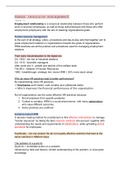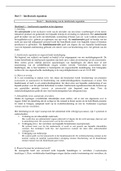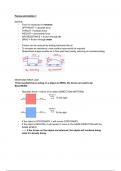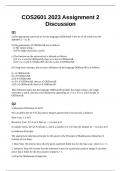Chapter 12 | Motion in a Circle
constant speed/constant magnitude of velocity B1
Uniform circular motion ON21P41/43Q1
acceleration (always) perpendicular to velocity B1
the angle subtended at the centre of a circle by an arc length equal to the
One radian ON07P4Q1
radius of the circle
the directed of angle with respect to the centre of the arc travel or the angle of
Angular displacement (𝜽)
the arc through which the object has moved from its starting position
Angular velocity (𝝎) the rate of change in angular displacement (𝜃) with respect to time (𝑡)
Period (T) the time taken for one complete oscillation
Frequency (f) the number of complete oscillation per unit time
the resultant perpendicular force towards the centre of the curved path needed
Centripetal force
to keep the body in uniform circular motion
Centripetal acceleration acceleration perpendicular to velocity B1 ON21P42Q1
Chapter 13 | Gravitational Fields
Gravitational field (strength) force per unit mass B1 ON22P42Q1 MJ21P41/43Q1 MJ21P42Q1 ON20P41/43Q1
region (of space) B1
Field of force ON20P41/43Q1 ON20P42Q5
where a particle experiences a force B1
force acting between two masses/
Gravitational force force on mass due to another mass/ MJ20P41/43Q1
force on mass in a gravitational field B1
(gravitational) force is (directly) proportional to product of masses B1
Newton's law of gravitation MJ22P41/43Q1 FM21P42Q1 ON19P41/43Q1 ON19P42Q1
force (between point masses) is inversely proportional to the square of their separation B1
work (done) per unit mass B1
Gravitational potential (at a point) MJ22P42Q1 ON21P41Q2 FM20P42Q1 MJ20P42Q1 FM19P42Q1
work (done on mass) in moving mass from infinity (to the point) B1
Chapter 14 | Temperature
Thermal equilibrium Temperature is the same. There is no net heat flow between them.
measures the degree of hotness or coldness of an object,
Temperature
not the amount of thermal energy in it
Thermometer device to measure temperature
the temperature at
Steam point (upper fixed point) which pure water boils at one atmospheric pressure and is
assigned the value of 100°C
the temperature at which
Ice point (lower fixed point)
pure ice melts at one atmospheric pressure and is assigned the value of 0°C
(thermal) energy per unit mass (to cause temperature change) B1
Specific heat capacity ON22P42Q2 ON21P41Q3
(thermal) energy per unit change in temperature B1
(thermal) energy per (unit) mass (to change state) B1
Specific latent heat ON19P41/43Q3 ON19P42Q3
(heat transfer during) change of state at constant temperature B1
, A2 Terms [1] A2 Definition Out
the amount of heat required per unit mass to change unit mass of the
Specific latent heat of fusion
substance from solid to liquid state, without changing its temperature
(thermal) energy per unit mass B1
Specific latent heat of vaporization MJ22P42Q3
energy to change state between liquid and gas at constant temperature B1
Chapter 15 | Ideal Gases
One mole the amount of substance containing same number of particles as in 0.012 kg of C-12
Avogadro constant the number of atoms of C-12 in 0.012 kg of C-12
a gas that obeys the equation: pV ∝ T, M1
where
Ideal gas p = pressure, MJ22P41/43Q3 FM19P42Q2
V = volume,
T = thermodynamic temperature A1
for a given mass of gas at constant temperature, the
Boyle’s law pressure varies inversely proportional to its volume, provided all other
physical conditions remain unchanged
for a given fixed mass of gas at constant pressure, the
Charles’ law volume is proportional to its absolute temperature, provided all other
physical conditions remain unchanged
for a given fixed mass of gas at constant
Gay-Lussac’s law volume, the pressure is proportional to its absolute temperature,
provided all other physical conditions remain unchanged
Root-mean-square speed the square root of the average of the squares of the speeds of the gas atoms
Elastic collision no loss of kinetic energy B1 ON21P42Q3
Chapter 16 | Thermodynamics
total potential energy and kinetic energy (of molecules/atoms) M1
Internal energy MJ20P41/43Q2 ON20P42Q2
(total) energy of random motion of particles A1
The increase in internal energy of a system is equal to the sum
First law of thermodynamics
of the heat added to the system and the work done on it
Isothermal process one thermodynamic process which takes place at a constant temperature, i.e., ∆𝑇 = 0
Isochoric or volumetric process the volume of the system remains constant, i.e., ∆𝑉 = 0
one thermodynamic process that takes
Adiabatic process
place in such a way that no heat flows into or out of the system, i.e., 𝑄 = 0
Isobaric process one thermodynamic process in which the pressure of the system remains constant, i.e., ∆𝑃 = 0
Chapter 17 | Oscillations
the to and fro or back to forth variation, typically in time,
Oscillation of some physical quantity measure about a central value (often a point of equilibrium) or between two or more
different states
Displacement distance from a (reference) point in a given direction B1 ON19P41/43Q4
Amplitude the maximum magnitude of the displacement of an oscillating system from its equilibrium position










